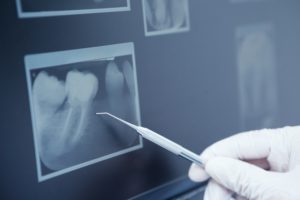8 Interesting Facts About Dentists and Teeth

 We normally don’t think of our teeth as particularly interesting things. They exist to give us a nice smile and help us chew our food. Other than that, there doesn’t seem to be anything too unique or special about them. But, in reality, there’s are a lot about teeth and dentistry, in general, that is actually rather interesting. Here are eight interesting facts about teeth and dentists.
We normally don’t think of our teeth as particularly interesting things. They exist to give us a nice smile and help us chew our food. Other than that, there doesn’t seem to be anything too unique or special about them. But, in reality, there’s are a lot about teeth and dentistry, in general, that is actually rather interesting. Here are eight interesting facts about teeth and dentists.
- Ancient dental implants go back as far as 600 AD. Pieces of shell were hammered into the jaws of Mayan women and made to look like human teeth. Today’s versions of dental implants, thankfully, are not as out there as that.
- The hardest substance existing in the human body is tooth enamel. Reportedly, tooth enamel is harder than steel, but can break more easily.
- One in four adults don’t brush their teeth every day, as recommended. The average person brushes their teeth between 45 to 70 seconds, rather than two minutes. In their lifetime, the average American will spend 38.5 days brushing their teeth.
- The average human has 32 teeth. Dogs have 42, cats have 30 and an armadillo has 104 teeth. Giraffes do not have any top teeth. A snail’s mouth may be smaller than a pin’s head, but it can have as much as 25,000 teeth.
- The earliest dentist was known as Hesi-Re from Egypt. He lived over 5,000 years ago. The first official female dentist lived in 1866 and her name was Lucy Beaman Hobbs. The first dental hygienist was a woman named Irene Newman in 1905.
- Contrary to popular myth, the first President George Washington never had wooden teeth. His dentures were made from ivory, gold, and other human teeth. The dentures were apparently very uncomfortable and made Washington extremely self-conscious, causing his lower lip to jut out unnaturally. Dentists weren’t very popular back then, so teeth falling out and needing to be replaced was common.
- The modern version of toothpaste has only existed for about 100 years. In Ancient Greece, they used coral powder, alabaster, talc, pumice and even iron rust as toothpaste.
- What hand you write with will typically determine what side you chew your food on. If you’re right handed, you’ll more than likely chew on the right side of your mouth. If you’re left handed, you will chew on the left side.
Dentistry has come a long way since first being discovered and who know Dentists are so interesting? Who knew the little bones in our mouths could have such an interesting and sometimes crazy history.
For more information on dentists and dental health, please visit loudoundentalassociates.com

